Easy changes you can make to save up to $500 on your power bill across the year
Consumer NZ and Warmer Kiwi Homes have teamed up to bring you some simple tips and tricks to help make your home a warmer, healthier place for you and your whānau. Our advice won’t take much time or effort and importantly most won’t even cost you a thing.
The average household can save up to $500* a year simply by making some of these small changes:
Know your power-hungry appliances
Get the most out of your heat pump
Use the right heater in the right room
You can also download a brochure to print.
You might be surprised how much money you can save by simply changing your power plan or company. Households can typically save between $400 and $500 per year when they change plan.
How to find a cheaper plan
Head to our questionnaire and answer a few quick questions.
Compare your results
Once you’ve entered these details, your available plans will be displayed, ranked from the cheapest to the most expensive. There are some things you’ll need to consider in order to make sure that the plan you choose is suitable for your home.
Some plans require that you:
have a smart meter at your house
commit to the plan for 12 to 24 months
pay for your power in advance
only pay online.
Already on the cheapest plan? That’s awesome! Power prices do change all the time though, so it pays to check Powerswitch at least once a year to make sure you’re not paying too much.
Time of use plans
Free ‘hour of power’ deals and low off-peak rates offer a great opportunity to save money, especially if you’re able to shift some of your household power use to these cheaper times.
Check the specifics of a plan you’re interested in by clicking the plus sign next to ‘Plan details’ on the Powerswitch website or by speaking to your electricity provider.
What to do if it’s hard to pay your bills
It is important to tell your power company if you are having trouble paying your electricity bills. If you let them know, they must help you to manage your power use and costs and offer you a payment support plan.
They must try to contact you at least five times before they disconnect your power.
If your electricity provider decides to disconnect you, they should not do it when it is harder for you to get reconnected. This means you should not be disconnected just before a weekend or public holiday, early in the morning or late at night.
If you are medically dependent on electricity
Your electricity must not be disconnected if you or someone in your house is registered as a ‘medically dependent consumer’. That means you need a supply of electricity in your home to stop serious harm to health. You must tell your electricity provider if you or someone in your house is medically dependent so they can help you register.
Learn more about your rights under the Consumer Care Obligations.
Switch off
Most of the things that you have plugged in at home use power all the time, even when they’re not switched on. Switching off these appliances at the wall when not in use can save up to $200 on your power bill over the course of a year.
Oven
Cooking a large meal in the oven for the whole whānau will cost about $1 each time. You can save even more by getting the slow cooker out instead; it’ll cost about 35¢ a meal, and you can use cheaper cuts of meat – win-win!
Drying clothes
A regular, vented clothes dryer can cost up to $3 per load. It might be your only option during wet, cold weeks, but take advantage of drying clothes outside as much as possible – it’s free after all.
Lights
An old 100W light bulb will cost you about 15¢ each evening to run. This all adds up, so be sure to turn off lights when you’re not in the room. If you can get your hands on them, opt for LED light bulbs as they’ll pay for themselves in power savings very quickly – the 100W equivalent LED bulb will only cost 3¢ over an evening, which could save you around $90 a year with all LED lighting.
Heated towel rail
A warm fluffy towel feels lovely after a shower. But did you know that leaving a heated towel rail on will cost you about $3 per week? Switch it off and save yourself around $150 on your yearly power bill.
Keep the air dry
What can you do?
Luckily, it’s pretty easy to manage. Fling open the windows for at least 10 minutes each day to help the house breathe out all that damp, stale air. Alternatively, if you have secure window stays, leave the windows cracked open during daylight hours, when you’re not using any heating, to ensure that you have nice fresh air coming in. The big bad wolf here is drying clothes inside. If you can do it outside, that’s your best bet.
Stop the heat from escaping

Curtains and window coverings
A lot of the heat from your home will disappear out the windows on cold nights if you don’t have window coverings – either curtains or blinds. It’s best to close them as soon as the sun goes down to capture as much heat as possible. If you don’t have window coverings, or if your curtains have seen better days, your local curtain bank might be able to sort you out with some new ones for free.

Draughts
Draughts make you feel chilly and mean you spend more money on trying to stay warm. Often, they come from around windows and doors and cat flaps. You can make your own draught ‘snake’ with a rolled-up towel or blanket that’ll block the cold air – though maybe leave the cat flap free!
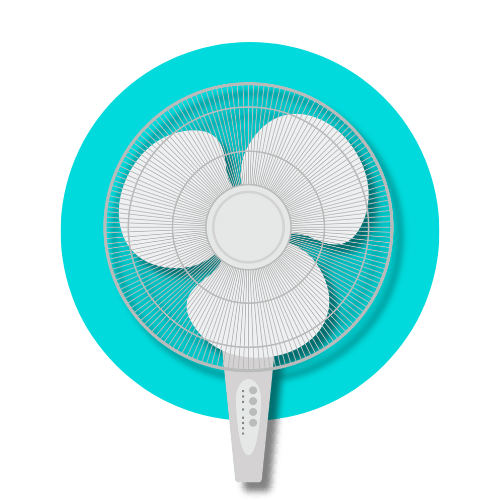
Use a fan
When you heat a room, the heat rises to the ceiling and eventually works its way out the house. If you have a spare fan, plug it in and put it on a low setting. It’ll spread the heat evenly throughout the room, and your heater won’t have to work as hard. In fact, it’ll save you money!
Setting the temperature
Heat pumps work best when set between 19 and 21 degrees. If it’s cold out, you don’t need to crank the heat pump to 30 degrees to make it work faster. High temperature settings use a lot of power and can lead to an eye-watering power bill.
To get the most out of your heat pump, change the mode on the controller so it’s on heat – click ‘mode’ until the little sun icon shows on the screen. From there, set the temperature between 19 and 21 degrees. Doing this can save you around $40 a year.
Filter
Heat pumps have removeable filters that you can see when you open the cover. Over time, they get clogged up with dust, which stops the air flowing. The heat pump then has to work harder to make up for the loss in air flow and will use more and more power.
Heat pumps have removeable filters that you can see when you open the cover. Over time, they get clogged up with dust, which stops the air flowing. The heat pump then has to work harder to make up for the loss in air flow and will use more and more power.
It’s an easy fix though and will only take a couple of minutes – take out the filters and give them a gentle vacuum. You’ll notice an immediate difference if they’re really dirty, and the room will instantly feel warmer. Make sure you do this job every couple of months, and you can save up to $50 per year in running costs.
Too much flow
Sometimes the shower pumps out more water than you need, and you end up wasting a lot of hot water down the drain. You can easily check how much water is wasted with a bucket and timer. Put the bucket under the showerhead and turn on the taps – if it fills up in less than 1 minute, it’s wasting money. Efficient showerheads can be expensive, but you can also buy water-flow restrictors that reduce the water flow and cost much less. Failing that, just don’t turn the taps all the way to full!
Stop the drips
A dripping hot tap can waste more than 70 litres of water a day. This can add over $200 a year to your power bill! If you are renting, notify your landlord as soon as you notice a drip – fixing a tap that’s dripping from normal wear and tear is usually their responsibility.
Cold laundry wash
Putting on a warm wash will set you back about 30¢. A cold wash often performs just as well and only costs around 6¢ per wash. A whānau with children and endless washing can make some savings here – up to $50 per year in fact, if your family does about four laundry washes per week.
To keep the chill at bay in bedrooms and other areas, most of us turn to plug-in heaters. Different types of plug-in heaters typically all cost the same to run – around 40-60¢ an hour. However, they don’t all deliver heat in the same way, and some are better suited to certain rooms over others.
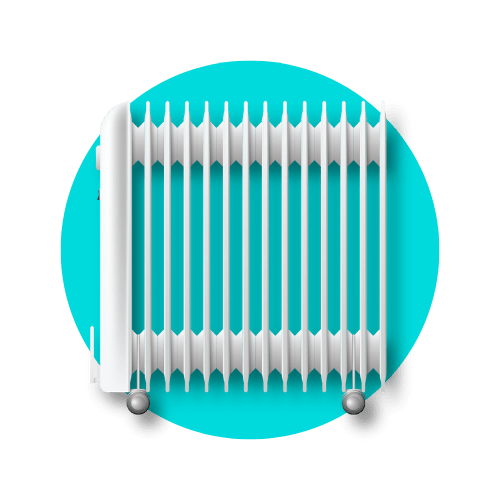
Bedrooms
Keeping bedrooms warm is essential to keeping your family healthy over winter. Oil column heaters are your best bet in here. They are quiet, deliver a gentler heat and are well suited to smaller spaces.
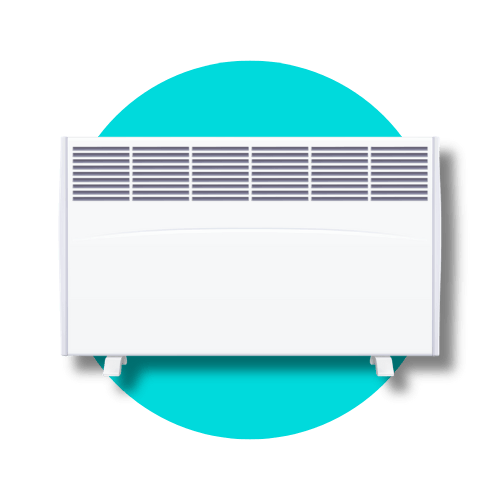
Living areas
While a heat pump is the most efficient option for larger living areas, if you don’t have one, tower heaters with fans work well in larger spaces like living areas as they spread the heat faster. Panel heaters can work well as they’re nice and flat and can be tucked back out of the way, and they’re very quiet.
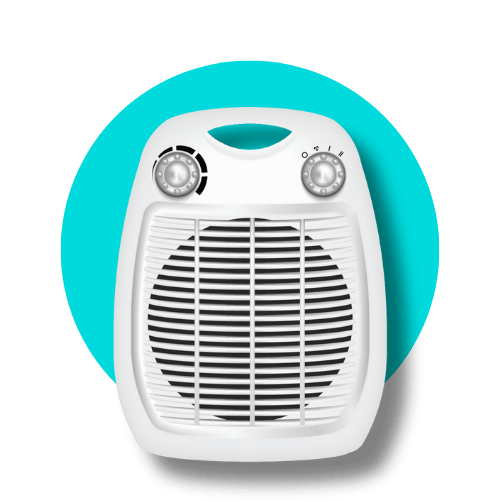
Just keeping you warm
Some houses are so hard to heat that you can struggle to make a room feel warm. In this case, your best bet is to have a small personal fan or radiant bar heater pointing directly at you. That will warm you up really quickly, but remember that others will still feel the chill.

What size do you need?
Most of the heaters you come across will be either 2,000W or 2,400W. These are big enough to heat a small, closed-off living area or large bedroom. Anything smaller than that is better suited to kids’ bedrooms – a heater that’s 1,000W or below will probably just take the edge off the cold, rather than keep the room warm.
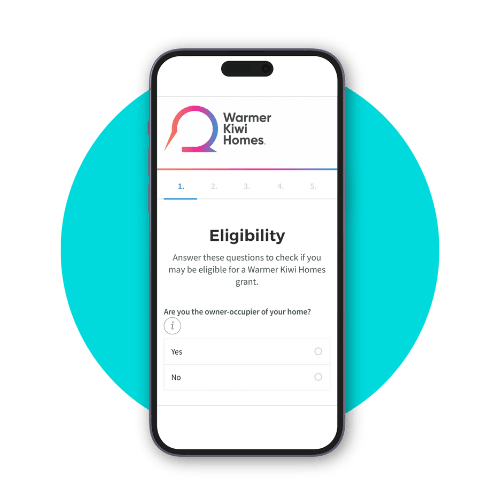
The Warmer Kiwi Homes programme covers up to 90% of the costs to purchase and install insulation and up to 80% off an efficient heater, to help you save money on your power bills while you enjoy a warmer, healthier home. You may be eligible if you own your own home, it was built before 2008 and you have a Community Services card or live in a low-income area. Visit warmerkiwihomes.govt.nz or call 0800 749 782 to check if you're eligible.
Learn more about how these savings figures were calculated.
Your rights under the Consumer Care Obligations.
Find out if you're eligible for a Warmer Kiwi Homes grant.